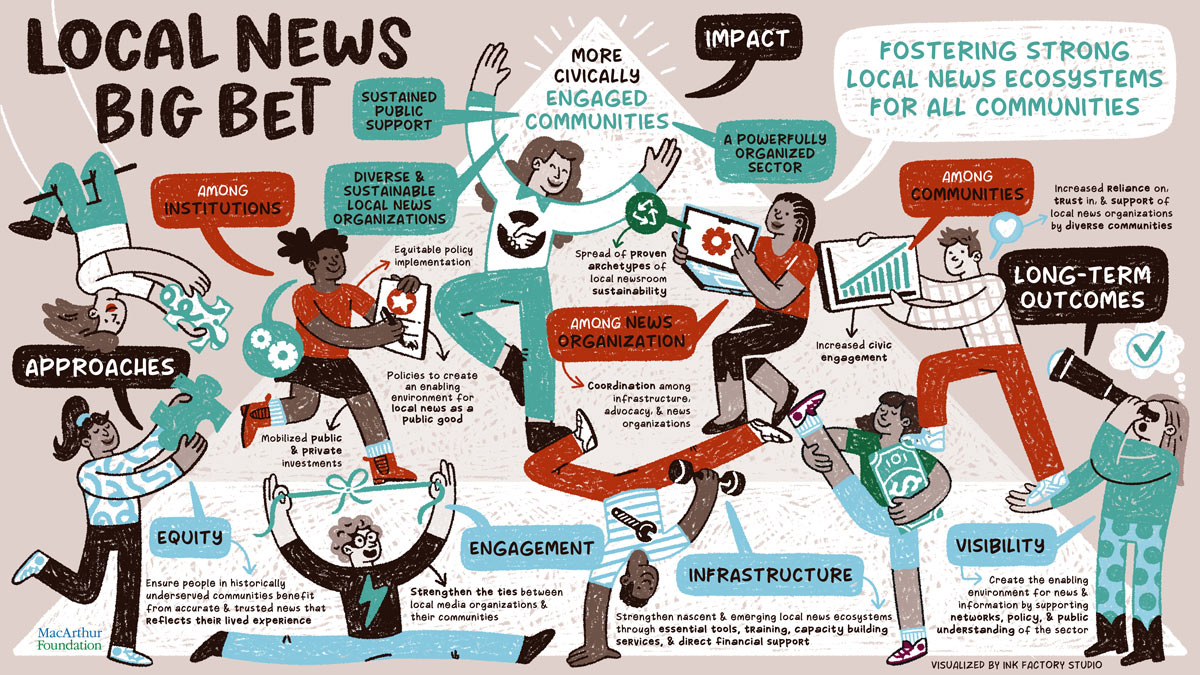Our Strategy
The Local News grantmaking is organized around four general approaches:
Equity
Ensuring people in historically underserved communities benefit from accurate and trusted news that reflects their lived experience.
Engagement
Strengthening the ties between local media organizations and their communities.
Infrastructure
Strengthening nascent and emerging local news ecosystems by providing support for essential tools, training, capacity, and services, as well as direct financial support.
Visibility
Creating the enabling environment for news and information by supporting networks, policy, and public understanding of the sector.
Why We Support This Work
Among the many challenges facing American democracy, from low voter turnout and declining civic engagement to increasing polarization and the rapid spread of misinformation and disinformation, one thing is inextricably connected to these and other problems: the steady disappearance of local news.
Since 2005, the United States has lost more than one third of its newspapers, and the news industry has lost 45,000 jobs, leaving over half of U.S. counties with little or no access to local news. This decline—combined with historically unequal distribution of news creation and delivery across the United States—has created a particularly urgent problem in the U.S. South, Borderland communities (along the U.S.-Mexico border), Appalachia, rural areas, and other communities with low civic health scores.
Underserved communities have been—and continue to be—misrepresented, excluded, and sometimes harmed by mainstream media narratives and coverage, while local media organizations serving these communities have been historically underfunded and undervalued. Lack of trust in the media is and has been a longstanding issue for these communities. And newsroom leadership and staff have not reflected the diversity of the communities they serve, leaving a lack of representative, accurate, and relevant news content. This dynamic poses a far-reaching crisis for our democracy and communities.
Communities need strong local news and information ecosystems to catalyze civic engagement and to help strengthen bonds and understanding between neighbors. And though many of the headlines regarding local news are dire, there is a lot to feel hopeful about: newsrooms across the country are reimagining local news and information in service of communities.




